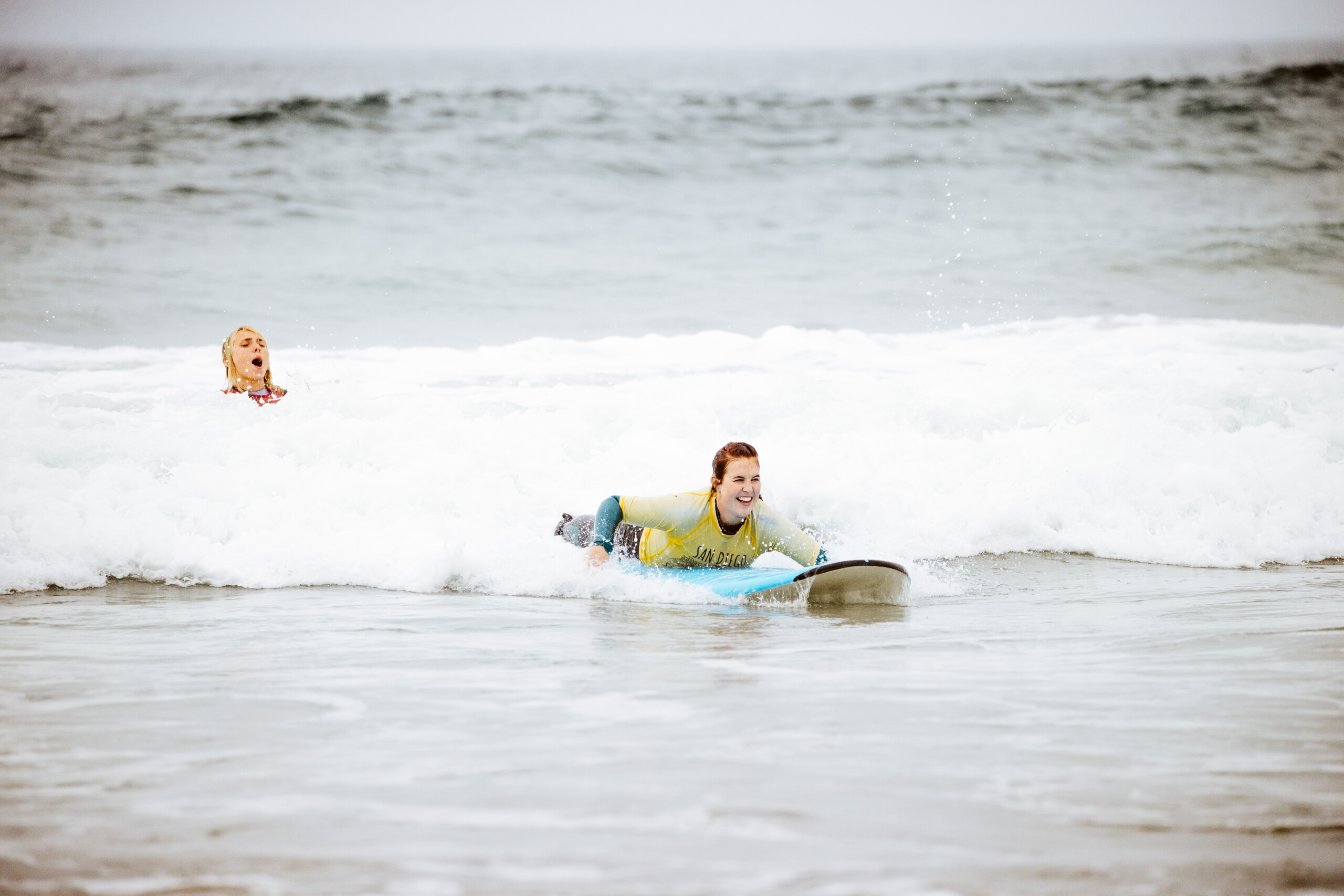For beginner surfers, one of the most challenging yet essential skills to master is your paddling technique. While it may seem simple at first glance, paddling requires proper technique, balance, and coordination to ensure you’re moving efficiently through the water. One of the most crucial aspects of this technique is keeping your body still on the surfboard. Maintaining a stable body position while paddling has a significant impact on your speed, endurance, and ability to catch waves. Let’s dive into why body stability is key to a successful paddle.
1. Why Body Stability Matters
When you paddle on your surfboard, your goal is to move through the water smoothly and quickly without wasting energy. Keeping your body still while paddling allows for maximum efficiency. If you’re constantly shifting or wiggling around, it creates unnecessary drag and resistance in the water, which slows you down.
Here are some reasons why staying still is so important:
- Minimizing Drag: Excessive movement creates more drag, slowing your progress toward the wave. If your body is swaying from side to side or your legs are kicking unnecessarily, you’ll lose momentum and tire out quickly.
- Efficient Energy Use: Surfing requires a lot of physical stamina, especially paddling out to catch waves. When you move efficiently, you conserve energy that can be used for paddling, popping up, and riding the wave. Wasting energy on unnecessary body movements means you’ll tire out sooner, limiting your time in the water.
- Stability and Control: Keeping your body still also helps maintain your balance on the board. Too much movement can cause you to rock side to side, potentially tipping you off the board, especially in choppy conditions. A stable body makes for a more controlled and effective paddle.
2. Proper Paddling Posture
To keep your body still, you need to understand the correct paddling posture. Here’s how to position yourself on the board for stability and efficiency:
- Lie Flat and Centered: Position yourself on the board so that it’s balanced, with your body lying flat. Your head should be slightly raised, and your feet should rest near the tail of the board. Your body should be centered, and you’ll want to avoid being too far forward or too far back, as this can affect the board’s balance.
- No Excessive Kicking: Many beginners instinctively kick their feet while paddling. While it may feel like it helps, kicking only adds unnecessary motion and disrupts the board’s glide. Keep your legs still and relaxed as you paddle.
- Engage Core Muscles: Keep your core engaged to help maintain a still and stable body. Engaging your core will prevent your torso from rocking or shifting as you paddle, helping you move more efficiently through the water.
3. Effective Arm Movement
While keeping your body still, your arm strokes are where the magic happens. Here’s how to use your arms effectively while paddling:
- Long, Deep Strokes: Focus on long, smooth strokes with your arms, pulling the water with power but in a controlled manner. Your arms should be reaching forward in front of you, one at a time, and pulling through the water in a fluid motion. The deeper and more controlled the strokes, the more propulsion you’ll generate.
- Avoid Splashing: When paddling, avoid slapping or splashing the water, as this creates turbulence and slows you down. Instead, aim for quiet, efficient strokes, where your hands enter the water cleanly and pull through with power.
- Cupped Hands: For maximum efficiency, keep your hands cupped as you paddle. This creates more surface area to pull the water and gives you more power with each stroke.
4. Common Mistakes to Avoid
Keeping your body still while paddling may take practice, especially if you’ve developed some common habits that work against you. Here are a few mistakes to watch out for:
- Overly Arched Back: Some beginners arch their back too much, thinking it helps them paddle faster. In reality, an overly arched back creates instability. Your chest should be slightly raised, but your lower body should remain relaxed and flat on the board.
- Kicking or Wiggling Legs: As mentioned earlier, kicking your legs while paddling creates drag and throws off your balance. Keep your legs still and focus on your arm movements to propel you forward.
- Shifting on the Board: Constantly moving forward or backward on the board, or adjusting your position, can make paddling more difficult. Once you find the right spot on your board, stay in that position to maintain balance and efficiency.
5. How to Practice Stillness While Paddling
Improving your paddling technique comes with practice, but there are specific ways you can focus on body stillness in and out of the water:
- Core Strength Exercises: Since keeping your body still requires core engagement, incorporating core-strengthening exercises like planks, crunches, and yoga into your routine will help improve your stability on the board.
- Slow Practice Paddling: While in the water, practice paddling slowly and mindfully. Focus on keeping your body as still as possible while using your arms to move through the water. This will help you fine-tune your technique and become more aware of unnecessary movements.
- Visualization: Visualize a straight line running down the center of your board and imagine your body glued to that line. This mental trick can help you focus on keeping your body steady and balanced as you paddle.
Paddling is a foundational skill in surfing, and learning to keep your body still while doing it will set you up for long-term success in the water. By minimizing drag, maintaining balance, and using your energy efficiently, you’ll be able to paddle faster, catch more waves, and enjoy longer sessions in the surf. Practice makes perfect, so next time you’re out in the water or a surf lesson, focus on keeping your body stable, and watch your paddling improve!
Happy surfing! 🌊











